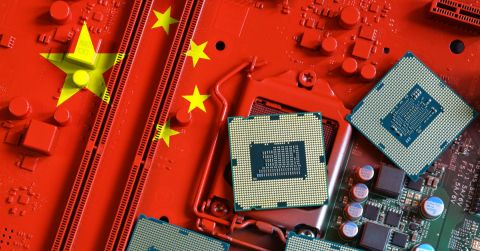Developing a Long-Term Strategy to Reduce Costs for Electronic Components

As component shortages have eased, the focus for the supply chain has shifted to cost reduction. Whether directly sourcing components or working with an Electronics Manufacturing Services (EMS) provider, the name of the game today is cost reduction.
Achieving significant cost reductions requires more than just quick fixes; it demands a comprehensive, long-term strategy. This article will guide you through the key elements of component pricing, identify the players involved, and show you how to influence them to optimize your costs effectively.
Understanding the Elements of Component Pricing
To develop a successful strategy for reducing costs, you really need to understand the basic elements that make component pricing. These are the distributor's margin and the manufacturer's cost. Each of these elements is controlled by different players in the supply chain, and understanding their motivations is essential to effectively influence pricing.
1. Distributor Margin (Disty Margin)
Distributors are probably your primary source of components, acting as intermediaries between component manufacturers and you. They purchase parts from manufacturers and resell them to buyers, adding a profit margin to cover their costs and generate profit.
It is important to note that while distributors control their profit margin, they do not have control over the manufacturer's cost of the component. The disty margin can vary significantly and is a primary area where buyers can negotiate to reduce their overall component costs.
Pro Tip: It's crucial to distinguish between margin and markup. Although often used interchangeably, they represent different concepts. Markup is the amount added to the base cost to determine the selling price. For example, a 25% markup on a $1.00 component results in a selling price of $1.25 ($1.00 x 1.25). Margin, on the other hand, is the percentage of the selling price that is profit. A 25% margin on a $1.00 component results in a selling price of approximately $1.33 ($1.00 / 1- .25).
2. Manufacturer Cost (Mfg Cost)
The base cost of a component, known as the book cost, is set by the manufacturer. This is the cost before any distributor markup is applied and is the basis for the prices you would find on platforms like Octopart. For large production volumes, manufacturers typically offer reduced costs to distributors through a special arrangement called broken cost or contract cost.
These broken costs are offered in competitive scenarios and are adjusted based on the volume and potential of the buyer. The broken cost is available exclusively for the intended customer; distributors are strictly prohibited from using this cost for other customers. In almost all cases, this same broken cost is available to all distributors.
Understanding and negotiating this aspect of pricing is crucial. It is not in anyone's interest to explain this system to you, but this is what is happening behind the scenes.

Identifying the Key Players
To effectively reduce costs, it's essential to know who controls these two elements and how you can influence them. Here are the key players, from distributors and the manufacturers.
1. Distributors (Disty)
Distributors are motivated by three primary factors: sales, market share, and design wins. Here's a closer look at how these factors influence their pricing strategy:
- Sales: The goal of any distributor is to drive sales. This is typically achieved by ensuring the success of their customers, which in turn boosts their own performance.
- Market Share: Distributors are keenly aware of their market share, particularly concerning specific manufacturers. Market share is a direct measure of their success in promoting and selling a particular manufacturer's products.
- Design Wins: This refers to the distributor's ability to secure business by having components specified in new designs. Design wins are crucial as they demonstrate to manufacturers the distributor's ability to help create demand for the manufacturer's products.
The key individual players at distributors are:
- Inside Sales Reps: Rarely influential in pricing unless they have over 5 years of experience.
- Field Sales Reps: If your account is big enough or potentially big enough, you will be assigned an FSR. If you are assigned an FSR you didn't ask for, this is a sign they are interested in your account.
- General Manager: The GM for your area is the most influential person. They will set the direction and tone the others will follow and, in strategic situations, may even be directly involved behind the scenes. Your exposure to the GM is another key indicator of how important they view you.
- Corporate: These influencers can be many, and you will likely never see or know about them. They tend to be most influential for particular product lines, especially ones where availability is tight and corporate controls who gets the inventory.
2. Manufacturers
Manufacturers control the cost of components and are motivated by market share and revenue. The key players within a manufacturing organization include:
- Direct Sales Teams: These employees are focused on technical sales and design wins rather than pricing. However, they can become involved in pricing discussions during the design cycle, where commitments for pricing and capacity are made.
- Manufacturer Representatives (Reps): Typically, these reps work on commission and are very motivated to secure sales. They can play a significant role in negotiating prices, especially for large orders.
- Product Managers: Perhaps the most influential individuals within a manufacturing company, Product Managers are responsible for setting costs and managing production schedules. Their decisions are based on long-term planning, market share, and product profitability. Establishing a relationship with the Product Manager can be instrumental in negotiating better prices and ensuring consistent supply. The PM is tasked with maximizing sales and profit. They are allocated a certain amount of production capacity, and they decide what gets made with that capacity. Since a typical manufacturing cycle is 12 to 14 weeks, the PM must be planning their production 6 to 9 months ahead. If they waste production capacity by building products that don't sell it is very bad for them.
How to Influence Key Players to Reduce Costs
Once you understand who the key players are, the next step is to develop strategies to influence them in your favor. The objective is to align your needs with their interests, creating mutually beneficial arrangements that lead to cost reductions.
1. Building Relationships with Distributors
To influence distributor pricing, focus on building strong relationships and aligning your goals with their interests:
- Inside Sales Representatives: While inside sales teams may not have significant influence, maintaining a positive relationship is still important. They can either help or hinder your efforts based on their perception of your company.
- Field Sales Representatives: FSRs are motivated by growth and are typically gatekeepers to better pricing. Convince them of your company's growth potential, and they may become advocates for better pricing within their organization.
- General Managers: GMs have a long-term focus and are likely to prioritize relationships with accounts that show strong growth potential. Demonstrating that your company is poised for growth can encourage GMs to offer more favorable pricing and terms.
2. Engaging with Manufacturers
Manufacturers are more likely to offer favorable pricing if they see a clear benefit to their market share and revenue:
- Direct Sales: Engage with direct sales teams early in the design cycle. This is the ideal time to secure commitments on pricing and production capacity before you officially select their components.
- Manufacturer Reps: Manufacturer reps can be powerful allies if they believe in your company's growth. Be transparent about your growth prospects and forecasts and keep them informed about your product roadmaps. Reps are one of your best sources for an introduction to the Product Manager.
- Product Managers: Product Managers respond to strong commitments. If you can commit to significant purchases and deliver on those commitments, you can build a valuable relationship that may lead to better pricing and priority in production schedules. However, it is critical to keep your promises, as breaking commitments can damage your relationship and ruin future negotiations.

Crafting and Presenting Your Strategy
With an understanding of the landscape and the players involved, the next step is to craft a strategy that will guide your interactions with distributors and manufacturers. Your strategy should be clear, comprehensive, and tailored to the interests of each player.
The core of your strategy can be presented in a formal presentation, such as a PowerPoint, which you update quarterly. This presentation serves to communicate what makes your company an attractive and reliable customer. Key points to cover include:
- Growth Prospects: Demonstrate that your company is growing and, if possible, that this growth is predictable. Distinguish between what is likely and what is aspirational to maintain credibility.
- Product Pipeline: Share information about your upcoming products and strategic customers. This is especially important when engaging with manufacturers, as it can influence their willingness to offer better pricing and terms.
- Business Practices: Clearly articulate your business practices, such as your purchasing cycles, any special inventory management needs, and expectations for delivery and quality.
- Supplier Agreements: If you have a standard supplier agreement, share it during your discussions. This shows that you are serious about establishing a long-term, mutually beneficial relationship.
Tailoring Your Strategy to Your Audience
While your overall strategy should be consistent, the emphasis should be flexible and adaptable depending on who you are presenting to:
- To Distributors: Emphasize your total spend across their franchised lines and how partnering with them can help increase their market share.
- To Manufacturers: Focus on the specific technologies they offer and how your company can help them achieve their market share and revenue goals.
Consistency Across Your Team
Ensure that your entire team, from executives to sales representatives, understands and supports the strategy. Consistency in messaging is crucial to maintaining credibility and building long-term relationships with both distributors and manufacturers.
Control Your Destiny
Reducing costs for electronic components is a complex, long-term endeavor. Success will favor you if you have a clear understanding of the pricing dynamics and the players involved.
By building strong relationships, aligning your interests with those of distributors and manufacturers, and presenting a compelling case for your business, you can achieve significant cost reductions. This strategic approach not only optimizes your component costs but also strengthens your position in the market, ensuring a reliable supply chain and fostering long-term partnerships.
As a final thought, this strategy applies even if you source primarily through EMS partners. It is reasonable to leave the cost of low-value parts to EMS, but you should always directly control the pricing for high-value components.









 Back
Back